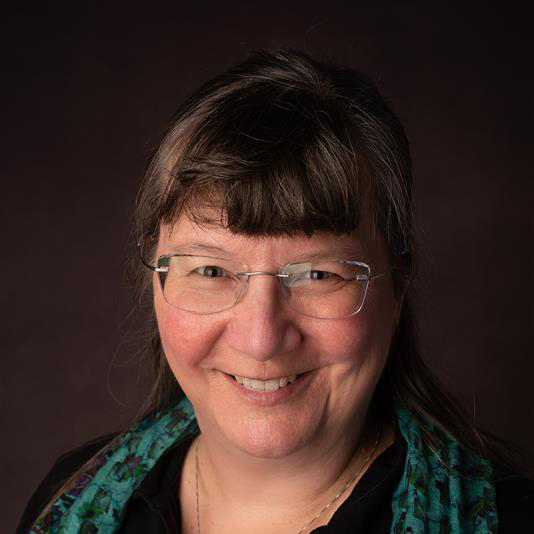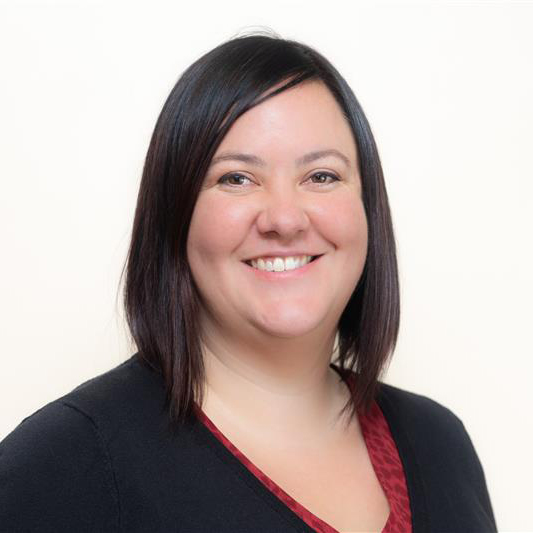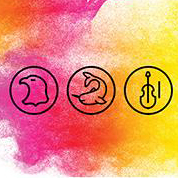Every June, Canadians honour the distinct traditions, history and perspectives of the First Nations, Inuit and Métis communities as part of both National Indigenous History Month and National Indigenous Peoples Day (June 21).
Announced in 1996 by former Governor General of Canada, Romeo LeBlanc, June 21 was selected as National Indigenous Peoples Day because it’s summer solstice, a day that holds great significance for many Indigenous communities.
On or close to this day, festivities are held nationwide to celebrate the Indigenous peoples’ rich heritage and contributions – and reflect on the sufferings First Nations, Inuit and Métis people have endured and continue to wrestle with in this nation.
While we mourn the discovery of the remains of 215 Indigenous children found at the former Kamloops Residential School, sadly, we know that it’s not an isolated incident. In fact, just a few weeks ago, the remains of 104 more children were found at the former Brandon Indian Residential School – and numerous other sites are currently under review where elders and survivors from Indigenous communities believe even more deceased children will be discovered.
There’s no doubt that Canada’s painful history of abuse, colonialism and systemic racism spans across decades – and its traumatic effects are still impacting survivors of the residential school system and their relatives.
As a regulatory body, we’re called to protect the public from acts of oppression by ensuring HR leaders promote fair and equitable practices in the workplace – and prioritize supporting and recognizing the unique experiences of Indigenous peoples in the workforce.
The path to true reconciliation and healing starts with dialogue and learning. We encourage our members to peruse some of the resources at the bottom of this page to continue learning more about the various Indigenous cultures, the trauma experienced by the first peoples on the lands now called Canada, and the resilience of First Nations, Inuit and Métis peoples.
A special thank you to Chantal Fraser, Thought Partner and Founder of Empower Path Inc. and Lisa Isaac, CHRL, CHRP, Owner and HR Consultant of Lisa Isaac HR Professional Services, who took the time to speak with HRPA about the significance of Indigenous History Month and Indigenous Peoples Day, and how HR leaders can better support Indigenous workers. Check out the interview below.
Q & A Interview – Supporting Indigenous Employees:
Chantal: To the best of my knowledge, my ancestors were spared the horrors of residential schools, in large part due to the protection of having colonial surnames.
Every time I hear, see or think about this incident – which sparked cries of outrage across the lands we call Canada – I am moved to the point of tears. I am a mother of three children. If I had had my children in the not-so-distant past, in one of the communities of my Métis ancestors, my children could have been amongst those who were tortured, abused and beaten. They could have died while in “school” and been buried in a mass grave.
I will believe that our country has woken up to systemic racism when 1) all Indigenous communities have regular access to potable water, 2) when Indigenous women are no longer being forced and coerced to undergo sterilization, and 3) when Indigenous ways of sharing teachings and knowledge are embedded in schools, that receive adequate funding, to serve Indigenous families. These are but three of the radical changes that must take place to combat systemic racism against Indigenous peoples.
Lisa: It’s absolutely tragic. But unfortunately, it’s not unexpected nor is it unique. The discovery is part of this terrible history of residential schools, and I would imagine that there are many more situations like that, but we don’t care enough about it to make it a big deal. But it is a huge deal.
And that is why the Truth and Reconciliation Commission exists. That’s why there’s been years of trying to repair relationships with Indigenous communities.
I think the only silver-lining from discovering the mass grave at Kamloops is that it’s raising more awareness and giving more people an opportunity to learn and talk about Indigenous experiences and the horrible history of institutionalized racism. Because in order to grieve and properly move forward, we need to continue having these kinds of conversations.
Chantal: First, I’d like to remind readers that there are hundreds of First Nations, Inuit and Métis communities on the lands we call Canada. No one person can speak for all Indigenous peoples. Within our lands there are Indigenous surgeons, doctors, dentists, engineers, professors, teachers, entrepreneurs, construction workers, musicians, videographers, artisans, writers, marketers, childcare providers, etc. Indigenous peoples are represented in the vast majority, if not all, of the occupations across Canada.
However, it would be disingenuous to ignore the negative impact that intergenerational trauma may have on some Indigenous workers. This could include interrupted formal education, as survivors of the attempted genocide on Indigenous peoples chose to keep their children close to home, permitting them to miss more school than non-Indigenous students. In addition, Residential School survivors may be more likely to support their children’s choice to leave school early than non-Indigenous parents would.
Let’s not forget that there are choices being made by governments, at all levels in Canada, to this day, which will likely continue to inflict intergenerational trauma on Indigenous peoples. For example, Indigenous children represent about half of all the children in foster care, while only making up about 7% of all children in Canada.
Lisa: Starting with the barriers, Indigenous people can’t always access the opportunities needed to get into the workforce. Or once in the workforce, they experience a larger than normal learning curve navigating in a corporate culture that is so different from what they grew up with.
In fact, in my community, my mother was one of the first to graduate from post-secondary school.
While she was a great role model for me, it was still hard to adapt when I went to school and subsequently entered the corporate world. This inequitable access to learning opportunities slows things down for many Indigenous people.
I think there’s also this challenge of being expected to learn and fit into traditional employment roles, as opposed to working in a way that honours Indigenous culture. Indigenous culture tends to be very collaborative, group-focused and not as individual-focused. This means there’s always that question of whether we should change to fit the mainstream and get a “good job.”
Another barrier is geography. A lot of communities are remote and don’t have good internet, let alone drinking water. And even if they do manage to go to school or get a job in the city, oftentimes it requires leaving the community. When you come back, many of these communities look at you like an “other.”
So, there are so many challenges that many Indigenous employees deal with on top of intergenerational trauma that stems from the awful past.
Chantal: The biggest barrier that most employers face when attracting and hiring Indigenous employees is the matter of trust. Employers must prove that they are going to treat Indigenous employees with respect. Employers who demonstrate that they have an inclusive environment, and that Indigenous employees have the opportunity for advancement within their organizations, are more likely to succeed.
Many employers have unconscious bias written into their organization’s cultural DNA. Until they can recognize their unconscious bias and remove systemic barriers within their recruitment and retention processes, then these employers will continue to face challenges when trying to hire Indigenous employees.
Most employers, even those actively trying to become more inclusive, have unintended systemic barriers within their hiring processes. One example is using online recruiting platforms. While many Indigenous peoples have access to the internet, a significant portion, due in large part to a lack of broadband coverage, do not have regular access making it difficult to apply online. The practical solution is to accept applications from Indigenous peoples by email, fax or mail.
Lisa: There is so much racism that still exists, which is a huge barrier for Indigenous people.
For example, some businesses hire the token Indigenous person, and then ask them to represent them at every career fair. This isn’t just exhausting, but it’s also offensive.
Essentially, employers must consider that there is a barrier to retaining employees who actually feel comfortable being themselves without worrying about being labelled by harmful stereotypes.
There are so many obstacles out there, but one of the biggest barriers is access to online job postings. I mentioned earlier that many Indigenous communities have limited access to the internet on reserves. But if your only way to apply to jobs is online, and there is no other alternative method like a phone number on your job listings, you inadvertently exclude a lot of people.
Chantal: The first step is learning about the people you wish to work with. Reading the Truth and Reconciliation Commission of Canada: Calls to Action is a good place to start. There are a number of Calls to Action addressing specific professions. All employers should pay particular attention to Call to Action 92. Make an act of Reconciliation by providing education and skills-based training for your employees.
In 2016, Canada finally became one of the last signatories to the 2007 United Nations Declaration on the Rights of Indigenous Peoples. While the declaration’s articles address our federal government’s obligations; information that may prove useful for employers who aspire to be more inclusive can be found in articles 9, 15 and 21.
HR leaders can improve their Indigenous recruitment and retention strategies by partnering with organizations that are trusted by First Nations, Inuit and Métis peoples. For example, Indigenous Link has been helping build bridges to Indigenous communities since 1999.
Lisa: A crucial first step is getting senior leadership involved. Because at the end of the day, it doesn’t matter how many new ideas you have for tackling hiring and retention barriers if your leaders aren’t on board.
This is where HR leaders can play an important role. They can educate themselves on Indigenous culture and history so that they can make the business case to their leaders on why current hiring and retention practices have to change.
Chantal: Sharing success stories is a powerful strategy. Having actual employees from under-represented groups act as brand ambassadors by sharing their success stories publicly, helps HR leaders demonstrate that they are willing to empower Indigenous peoples in their workplace.
Lisa: It’s about having conversations about Indigenous experiences. This doesn’t mean tapping people on the shoulder and saying, “because you’re Indigenous, let’s talk about this.” It’s more about building that space for people to share if they want to, grieve if they need to, or raise concerns about inequitable access to certain opportunities in the workforce.
There’s so much historical trauma we’re all grappling with and even the idea of children going away to residential schools can bring up a lot of grief for employees. Family and community are very important parts of Indigenous culture which can make these recent stories in the news really triggering.
As HR leaders, asking your Indigenous workers how you can support them is necessary. But don’t rush to the assumption that what works for one employee will work for a whole group of people.
Chantal: As mentioned earlier, reading the Truth and Reconciliation Commission of Canada: Calls to Action is a good place to start. There are a number of Calls to Action addressing specific professions. All employers should pay particular attention to Call to Action 92.
“Employers who choose to invest in reconciliation, may do so by providing education and skills-based training for their employees, at all levels in their organizations, in response to Call to Action 92.”
Lisa: I would recommend accessing the Business Reconciliation in Canada Guidebook provided by the Canadian Council for Aboriginal Business. It’s a multi-page book that breaks down the steps of TRC and how employers can integrate it into their organizations.
Then I suggest talking about the guidebook with your entire team to try to understand what it means for your business – because each business is different.
Another thing that I find really impactful is taking part in a blanket exercise. If you’re invited to one, blanket exercises can be a really powerful way to understand what the last 400 years of history might have felt like for Indigenous people.
**Responses have been edited for clarity and length.
HRPA Resources:
Key Insights on Diversity & Inclusion: A Joint HRPA and Diversio Report
On-Demand Webinars: Equity, Diversity and Inclusion On-Demand Webinars
Inclusive Hiring Best Practices
Standard Code of Conduct
Zero Tolerance Policy
Other Resources:
Assembly of First Nations
CAB: Business Reconciliation in Canada Guidebook
Canadian Encyclopedia – National Indigenous Peoples Day
Canadian Encyclopedia – Intergenerational Trauma and Residential Schools
Government of Canada – Indigenous Services Canada
Government of Canada – National Indigenous History Month
Government of Canada – National Indigenous Day
Indspire
Inuit Tapiriit Kanatami
Metis National Council
Native Canadian Centre of Toronto
Native Women’s Association of Canada
Reconciliation Canada
Reconciliation – the Blanket Exercise
The Truth and Reconciliation Commission of Canada: Calls to Action
*Blog Image: Government of Canada – Description of Visual Elements (Indigenous History Month)
Interviewee Bios:

Chantal Fraser
Thought Partner and Founder, Empowered Path Inc.
Through her company, Empowered Path Inc. Chantal Fraser acts as a Thought Partner, to help people learn how to help themselves, their communities and organizations thrive.
Chantal offers a variety of services including: delivering accessible online career programs, and delivering Indigenous Inclusion sessions to Canadian employers from Coast to Coast to Coast, with strategic partners Indigenous Link. Chantal has Métis ancestors and is a military veteran.
Lieutenant-Colonel (retired) Chantal Fraser, holds an MBA from the Royal Military College of Canada and is a recipient of the Human Resources Professional Association (HRPA) Honourary Life Award.
For more information visit Chantal’s website at https://www.empoweredpath.ca/link

Lisa Isaac
CHRL, CHRP, Owner and HR Consultant, Lisa Isaac HR Professional Services
Lisa is a Certified HR Leader and Professional, passionate about helping leaders with their people. Her authentic approach to leadership is to work in partnership for sustainable success. Prior to founding the company, she worked in the manufacturing, energy, and banking industries in Alberta, Nunavut, Ontario, and in her home community, Moose Deer Point First Nation, on beautiful Georgian Bay.
She holds the designations of Certified Human Resources Leader (CHRL) and Professional (CHRP) and is an active member of the regulatory body, the Human Resources Professional Association (HRPA), where she coaches and mentors the HR leaders of the future.
Lisa has been featured in a Lambton Shield podcast and print magazine as a successful female entrepreneur; as a panelist in the International Women’s Day “Meet the Entrepreneur” event; as the cameo entrepreneurial video game host for the level on health and safety; and as a guest on the LinkedIn mini-series “The ABC’s (authenticity, branding, and connecting) for candidates”.

Chantal Fraser
Thought Partner and Founder, Empowered Path Inc.
Through her company, Empowered Path Inc. Chantal Fraser acts as a Thought Partner, to help people learn how to help themselves, their communities and organizations thrive.
Chantal offers a variety of services including: delivering accessible online career programs, and delivering Indigenous Inclusion sessions to Canadian employers from Coast to Coast to Coast, with strategic partners Indigenous Link. Chantal has Métis ancestors and is a military veteran.
Lieutenant-Colonel (retired) Chantal Fraser, holds an MBA from the Royal Military College of Canada and is a recipient of the Human Resources Professional Association (HRPA) Honourary Life Award.
For more information visit Chantal’s website at https://www.empoweredpath.ca/link

Lisa Isaac
CHRL, CHRP, Owner and HR Consultant, Lisa Isaac HR Professional Services
Lisa is a Certified HR Leader and Professional, passionate about helping leaders with their people. Her authentic approach to leadership is to work in partnership for sustainable success. Prior to founding the company, she worked in the manufacturing, energy, and banking industries in Alberta, Nunavut, Ontario, and in her home community, Moose Deer Point First Nation, on beautiful Georgian Bay.
She holds the designations of Certified Human Resources Leader (CHRL) and Professional (CHRP) and is an active member of the regulatory body, the Human Resources Professional Association (HRPA), where she coaches and mentors the HR leaders of the future.
Lisa has been featured in a Lambton Shield podcast and print magazine as a successful female entrepreneur; as a panelist in the International Women’s Day “Meet the Entrepreneur” event; as the cameo entrepreneurial video game host for the level on health and safety; and as a guest on the LinkedIn mini-series “The ABC’s (authenticity, branding, and connecting) for candidates”.
